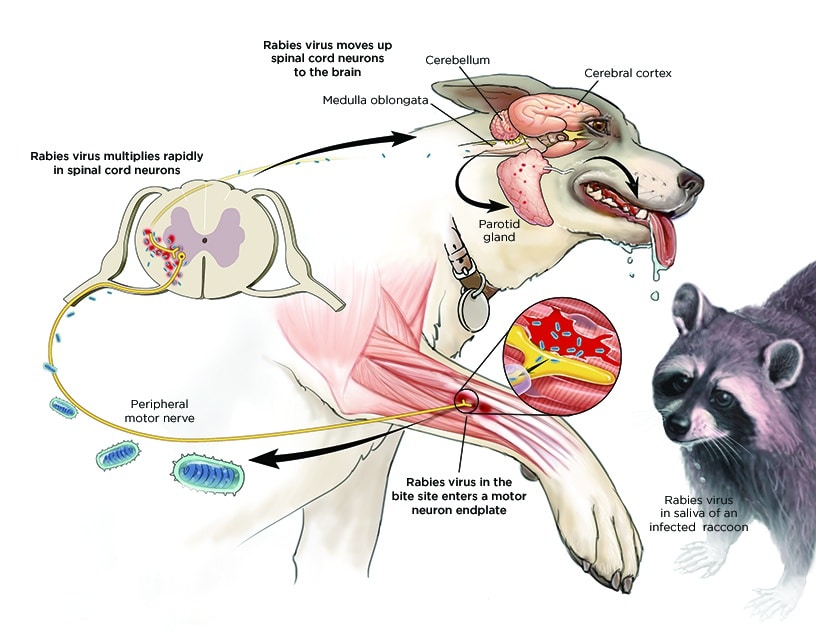


Posted by: admin on December 28, 2024
Rabies is a deadly viral disease that affects the nervous system of dogs, causing severe symptoms and ultimately leading to death. It is caused by the rabies virus, which is primarily transmitted through the saliva of infected dogs, usually through a bite.
1. Animal Bites: The most common mode of transmission is through the bite of an infected dog.
2. Scratches: Although rare, rabies can also be transmitted through scratches or licks on open wounds or mucous membranes.
3. Organ Transplantation: In rare cases, rabies can be transmitted through organ transplantation from an infected donor.
The incubation period of rabies in dogs can vary from a few days to several months or even years. The symptoms can be divided into three main stages:
1. Prodromal Stage: This stage can last from 2 to 10 days and is characterized by:
- Changes in behavior, such as restlessness, agitation, or aggression
- Changes in vocalization, such as excessive barking or whining
- Fever
- Loss of appetite
2. Furious Stage: This stage is characterized by:
- Aggression and attack behavior
- Restlessness and agitation
- Increased salivation
- Difficulty swallowing
3. Paralytic Stage: This stage is characterized by:
- Paralysis of the face, legs, or tail
- Difficulty swallowing
- Increased salivation
- Eventual coma and death
Diagnosing rabies in dogs can be challenging, but it typically involves:
1. Medical History: A thorough medical history, including information about the bite or exposure.
2. Physical Examination: A physical examination to look for signs of neurological dysfunction.
3. Laboratory Tests: Laboratory tests, such as:
- Direct fluorescent antibody test (DFA)
- Reverse transcription polymerase chain reaction (RT-PCR)
- Virus isolation
There is no specific treatment for rabies in dogs, but prompt medical attention can prevent the disease if administered promptly after exposure. This includes:
1. Post-Exposure Prophylaxis (PEP): A combination of:
- Immediate washing of the wound with soap and water
- Administration of rabies immunoglobulin (antibodies against the rabies virus)
- A series of rabies vaccinations
2. Supportive Care: In cases where symptoms have already developed, supportive care, such as:
- Respiratory support
- Pain management
- Hydration and nutrition
Preventing rabies in dogs involves:
1. Vaccination: Vaccinating dogs against rabies, usually starting at 3-4 months of age.
2. Avoiding Contact: Avoiding contact with wild animals, especially those that may carry rabies.
3. Proper Wound Care: Properly caring for wounds, including immediate washing with soap and water.
4. Education: Educating dog owners about the risks of rabies and the importance of prevention.
Rabies is a deadly viral disease that requires prompt medical attention to prevent. Understanding the transmission, symptoms, diagnosis, treatment, and prevention of rabies in dogs is crucial in controlling and eliminating this disease.
Written by ;
PRIME VET CLINIC , INDORE